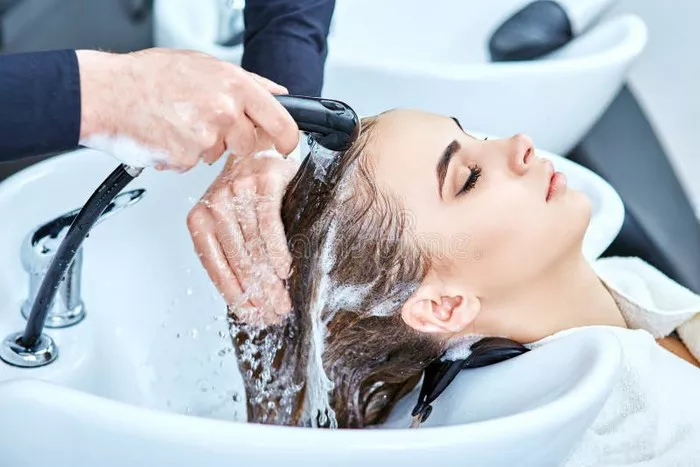When it comes to hair care, many people are seeking natural alternatives to commercial products. Baking soda, a common household item, has gained popularity as a potential hair cleanser. But how often can you use baking soda to wash your hair without causing damage? In this article, we will explore the benefits of using baking soda for hair care and provide insights into the appropriate frequency for washing your hair with this natural ingredient.
Introduction to Baking Soda
Baking soda, also known as sodium bicarbonate, is a versatile white crystalline powder often used in cooking, cleaning, and personal care. Its chemical properties, including its ability to release carbon dioxide gas when heated, make it an essential leavening agent in baking. Beyond the kitchen, baking soda’s mild abrasive and alkaline qualities make it effective for household cleaning. In personal care, it can be used for skin exfoliation, odor control, and even as an occasional alternative to shampoo. While it has many practical applications, caution is advised as its abrasive nature can lead to unintended consequences if used excessively or inappropriately.
Can baking soda be used to wash hair?
Baking soda can be used as an alternative to traditional shampoo to wash hair, but with some precautions. Baking soda is alkaline and can help remove excess oil and residue from the scalp. However, it can be harsh and potentially strip natural oils, leading to dryness and scalp issues. To use it, mix a small amount of baking soda with water to create a paste, apply it to the scalp, and then rinse thoroughly. It’s recommended to use this method occasionally and follow up with a diluted apple cider vinegar rinse to restore pH balance and condition the hair.
Benefits of Washing Hair with Baking Soda:
Here are the benefits of shampooing with baking soda:
1. Gentle Cleansing:
Baking soda, also known as sodium bicarbonate, possesses mild abrasive properties that can effectively remove dirt, excess oils, and product buildup from your scalp and hair. Unlike harsh commercial shampoos, baking soda is less likely to strip your hair of its natural oils, which are essential for maintaining healthy locks.
2. pH Balancing:
One of the key benefits of using baking soda for hair care is its ability to help balance the pH levels of your scalp. An imbalanced pH can lead to issues such as dandruff and itchiness. Baking soda’s alkaline nature can aid in restoring the optimal pH balance, promoting a healthier scalp environment.
3. Natural Shine and Softness:
Regular use of baking soda can lead to softer and shinier hair. By removing impurities and buildup, your hair strands can reflect more light, giving your hair a natural luster and smooth texture.
Determining the Right Frequency:
Here’s how to determine the correct frequency to wash your hair:
1. Individual Hair Type:
The appropriate frequency of using baking soda to wash your hair varies depending on your hair type. Those with oily hair might find that they benefit from more frequent use, while individuals with dry hair should use it less often to avoid over-drying.
2. Trial and Observation:
Begin by using baking soda as a hair cleanser once a week and monitor how your hair responds. Pay attention to factors such as scalp moisture, hair texture, and overall appearance. Adjust the frequency based on your observations.
3. Avoid Overuse:
While baking soda can be effective, using it too frequently can lead to potential drawbacks. Over time, excessive use can cause your hair to become overly dry, brittle, and prone to breakage. It’s essential to strike a balance to avoid these issues.
Best Practices for Washing Hair with Baking Soda:
Here’s how to wash your hair with baking soda:
1. Create a Baking Soda Solution:
Mix one to two tablespoons of baking soda with water to form a paste. Adjust the quantities based on your hair length and thickness. This paste should have a runny consistency, making it easier to apply evenly.
2. Gentle Application:
Before applying the baking soda mixture, wet your hair thoroughly. Gently massage the paste onto your scalp using your fingertips, focusing on the roots and areas prone to oiliness. Avoid vigorously scrubbing, as this could lead to irritation.
3. Rinse Thoroughly:
After massaging the baking soda mixture, rinse your hair thoroughly with lukewarm water. Ensure that no residue remains, as this could lead to buildup over time.
4. Follow with Conditioner:
While baking soda cleanses your hair, it’s crucial to follow up with a conditioner to restore moisture and maintain hair health. Choose a conditioner suitable for your hair type and apply it primarily to the lengths and ends of your hair.
See Also: The Ongoing Debate: Frequency of Hair Washing Impacts More Than Meets the Eye
Conclusion:
Using baking soda to wash your hair can be a natural and effective method for maintaining scalp health and promoting hair shine. However, finding the right balance and frequency is essential to avoid potential pitfalls. By understanding your hair type, observing its response, and following best practices, you can enjoy the benefits of baking soda as a hair cleanser while keeping your locks looking their best.
Incorporating baking soda into your hair care routine can be a rewarding experience, but remember that individual results may vary. As you embark on this natural hair care journey, pay attention to your hair’s signals and adjust your routine accordingly. With proper care and attention, you can achieve the desired outcomes without compromising the health of your hair and scalp.


